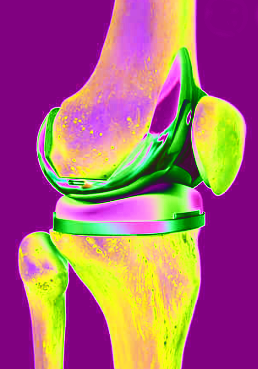Cartilage clone tested
 Engineers are looking at the human body for design tips.
Engineers are looking at the human body for design tips.
British researchers have developed a new material that mimics human cartilage - the body's shock absorbing and lubrication system.
The research team believes a cartilage-like material would have a wide-range of uses in engineering.
Cartilage is a bi-phasic porous material, meaning it exists in solid and fluid phases.
It switches to its fluid phase by absorbing a viscous substance produced in the joints called synovial fluid. This fluid not only lubricates the joints but when held in the porous matrix of the cartilage, it provides a hydroelastic cushion against compressive forces.
Because the cartilage is porous, the synovial fluid eventually drains away and as it does, it helps dissipate the energy forces travelling through the body, protecting joints from wear and tear and impact injuries. At this point the cartilage returns to its sold phase, ready for the cycle to be repeated.
“We have now developed a material for engineering applications that mimics some of the most important properties found in cartilage, and it has only been possible because we have found a way to mimic the way nature does it,” said lead researcher Dr Siavash Soltanahmadi.
“There are many applications in engineering for a synthetic material that is soft but can withstand heavy loading with minimum wear and tear, such as in bearings. There is potential across engineering for a material that behaves like cartilage.”
Earlier attempts at developing a synthetic cartilage system have focused on the use of hydrogels, materials that absorb water. Hydrogels are good at reducing friction but perform poorly when under compressive force.
One of the problems is that it takes time for the hydrogel to return to its normal shape after it has been compressed.
The researchers have overcome this problem by creating a synthetic porous material made of a hydrogel held in a matrix of polydimethylsiloxane or PDMS - a silicone-based polymer. The matrix keeps the shape of the hydrogel.
In a new paper, scientists report that the load-bearing behaviour of the hydrogel held in the PDMS matrix was 14 to 19 times greater than the hydrogel on its own. The equilibrium elastic modulus of the composite was 452 kPa at a strain range of 10 to 30 per cent, close to the values reported for the modulus of cartilage tested.
The hydrogel also provided a lubricating layer.
The scientists believe future applications of a new material based on the function of cartilage would challenge many traditional oil-lubricated engineering systems.







 Print
Print